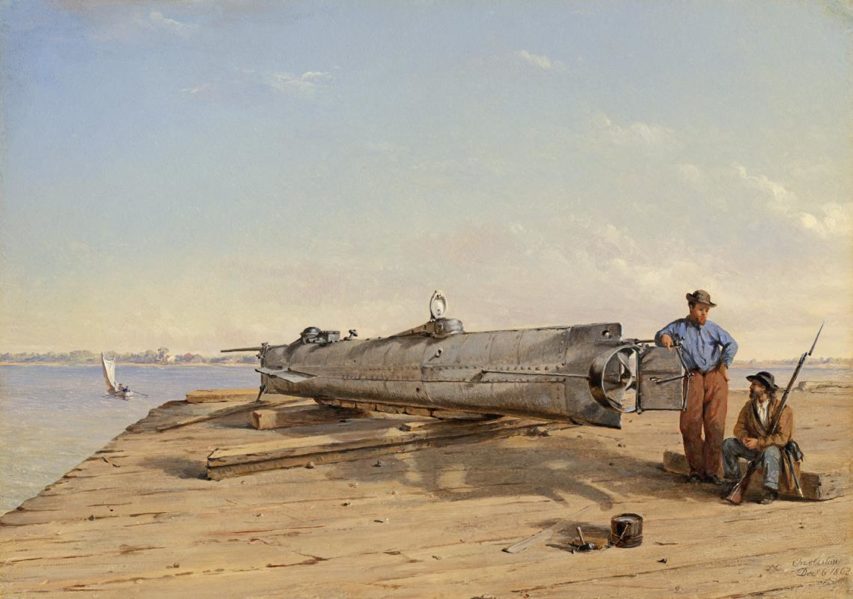Published on 24 Aug 2017
The 11th Battle of the Isonzo river continued this week and the Italians manage to break through parts of the Austro-Hungarian lines, they hesitate to exploit the breakthrough though and the opportunity is lost. Meanwhile the French break through the German lines at Verdun and Herbert Plumer comes up with a plan to defeat the German Hindenburg Line.
August 25, 2017
The 2nd Battle Of Verdun – Lost Opportunities On The Isonzo River I THE GREAT WAR Week 161
Great Northern War – I: When Sweden Ruled the World – Extra History
Published on 19 Aug 2017
A young boy king had inherited the crown of the Swedish Empire, and his neighbors saw an opportunity to attack. To their surprise, young Charles XII of Sweden turned out to be a fearsome opponent who quickly repelled their assaults – and then sought revenge.
Solving the mystery of the fate of H.L. Hunley‘s crew
When the Confederate submarine H.L. Hunley was found, the bodies of the crew were still in their duty positions within the vessel, as if they’d been unaware or unable to do anything to save the situation. Sarah Knapton reports on what is now believed to have killed the crew almost instantaneously:

“Submarine Torpedo Boat H.L. Hunley, Dec. 6, 1863″ by Conrad Wise Chapman.
“The inventor of this boat, a man named Hunley, can be seen; also a sentinel. This boat, it was at first thought would be very effective; twice it went out on its mission of destruction, but on both occasions returned with all the crew dead. After this had happened the second time, someone painted on it the word ‘coffin.’ There was just room enough in it for eight men, one in front of the other, with no possibility of anyone sitting straight. The third time it started out, it never came back, nor was anything ever heard from it, but as one of the United States men-of-war in the harbor (USS Housatonic) was sunk at about the same time, the supposition was that they both went to the bottom together. Other objects to be seen in the picture are, Sullivan’s Island, and a Dispatch boat.” – Conrad Wise Chapman, 1898 (via Wikimedia)
The mystery of how the crew of one of the world’s first submarines died has finally been solved – they accidentally killed themselves.
The H.L. Hunley sank on February 17 1864 after torpedoing the USS Housatonic outside Charleston Harbour, South Carolina, during American Civil War.
She was one of the first submarines ever to be used in conflict, and the first to sink a battleship [Housatonic was actually a sloop-of-war, not a battleship].
It was assumed the blast had ruptured the sub, drowning its occupants, but when the Hunley was raised in 2000, salvage experts were amazed to find the eight-man crew poised as if they had been caught completely unawares by the tragedy. All were still sitting in their posts and there was no evidence that they had attempted to flee the foundering vessel.
Now researchers at Duke University believe they have the answer. Three years of experiments on a mini-test sub have shown that the torpedo blast would have created a shockwave great enough to instantly rupture the blood vessels in the lungs and brains of the submariners.
“This is the characteristic trauma of blast victims, they call it ‘blast lung,'” Dr Rachel Lance.
“You have an instant fatality that leaves no marks on the skeletal remains. Unfortunately, the soft tissues that would show us what happened have decomposed in the past hundred years.”
The Hunley‘s torpedo was not a self-propelled bomb, but a copper keg of 135 pounds of gunpowder held ahead and slightly below the Hunley‘s bow on a 16-foot pole called a spar
The sub rammed this spar into the enemy ship’s hull and the bomb exploded. The furthest any of the crew was from the blast was about 42 feet. The shockwave of the blast travelled about 1500 meters per second in water, and 340 m/sec in air, the researchers calculate.
The End of the Bronze Age
Published on 28 Sep 2015
Around 1200 BC, the countries of the Eastern Mediterranean went into major cultural decline: The Late Bronze Age came to a sudden end.
Kingdoms that had wielded immense power completely disappeared. For several centuries after this, agriculture was people’s only means of subsistence. These were pivotal changes in history. Explaining them remains one of the big challenges in Mediterranean archaeology.
In this video, the foundation Luwian Studies presents a comprehensive and plausible scenario of what might have happened.



